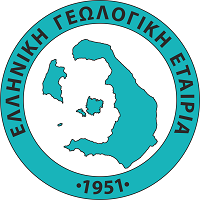The Betic (Southern Spain) and the Rif (Morocco) mountain chains, connected through the Gibraltar Strait, shapes a W-E elongated and arcuate Alpine orogenic belt. The Alborân Sea, in continuity to the east with the South Balearic Basin, is located in the inner part of this alpine belt. The Iberian and African continental forelands bound the region as a whole to the north and south, respectively, and to the east it is connected to the oceanic Sardine-Balearic Basin. The peculiarities of these westernmost Mediterranean chains result from: (1) its position between two large convergent plates -Africa and Europe- that have had variable directions of relative motion since the late Cretaceous; and (2) the Neogene westward migration of the orogenic hinterland and its simultaneous "back-arc"-like extension, generating the Alborén Sea basin. The complexes and large paleogeographic terrains traditionally recognized in the Betic and Rif chains belong to four pre-Neogene crustal domains: the South-Iberian and Maghrebian passive continental paleomargins (External Zones of the orogen), the Flysch Units, and the Alborân Crustal Domain composed mainly of a pre- Miocene metamorphosed thrust-stack (Nevado-Filabride, Alpujârride, and Malaguide complexes, from bottom to top). The boundaries between the main metamorphic complexes of the Alborân Domain are extensional detachments, which finally developed under brittle conditions and are commonly sealed by middle-to-late Miocene marine-to-continental sediments. They, nonetheless, are not the most recent structures in the Alborân Domain, because upright, E-W open folds warp the extensional detachments, and finally, high-angle normal faults and strike-slip faults, many of which are still active, offset folds and extensional detachments. The tectonic evolution of the Betic Alborân orogenic system shows close similarities with the one depicted in other arcuate-shaped, Alpine mountain ranges in the Mediterranean, such as the Hellenic Arc and the Aegean Sea. Like in the westernmost Mediterranean, a thickened (pre Miocene) crust is bounding there a thinned, continental (?) basin. Extension is also formed here in a "back-arc" setting, being developed simultaneously with the N-S convergence between the African and European plates.
(EN)

